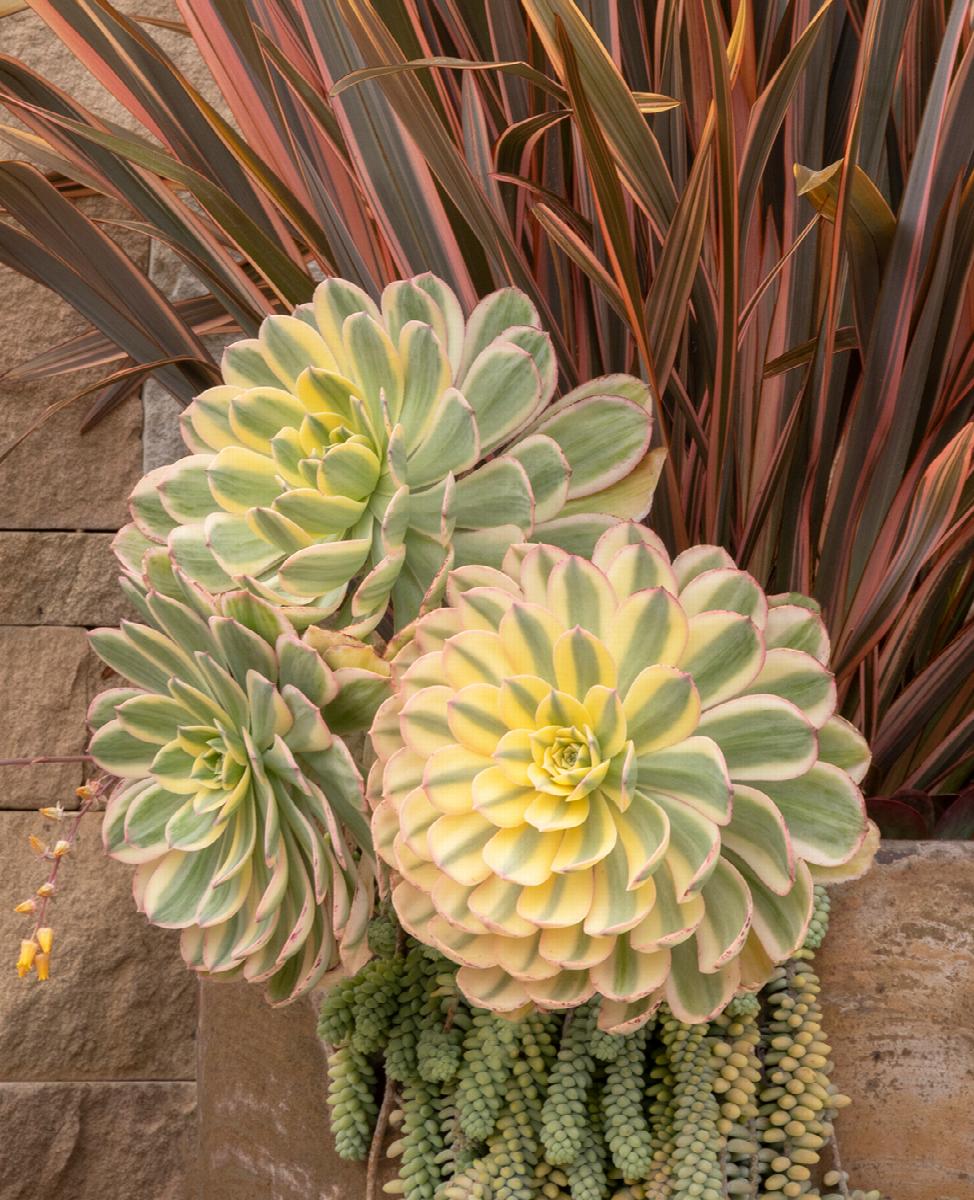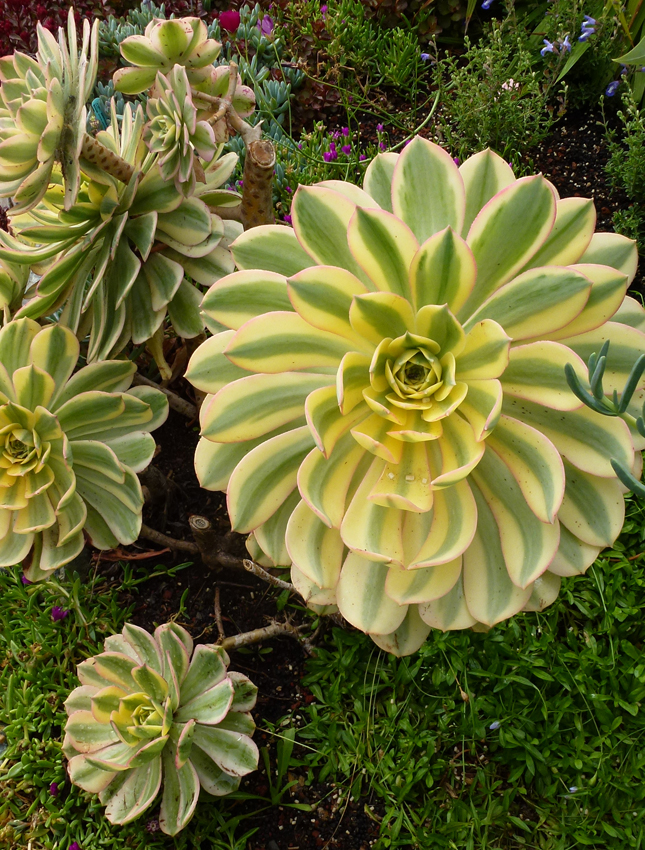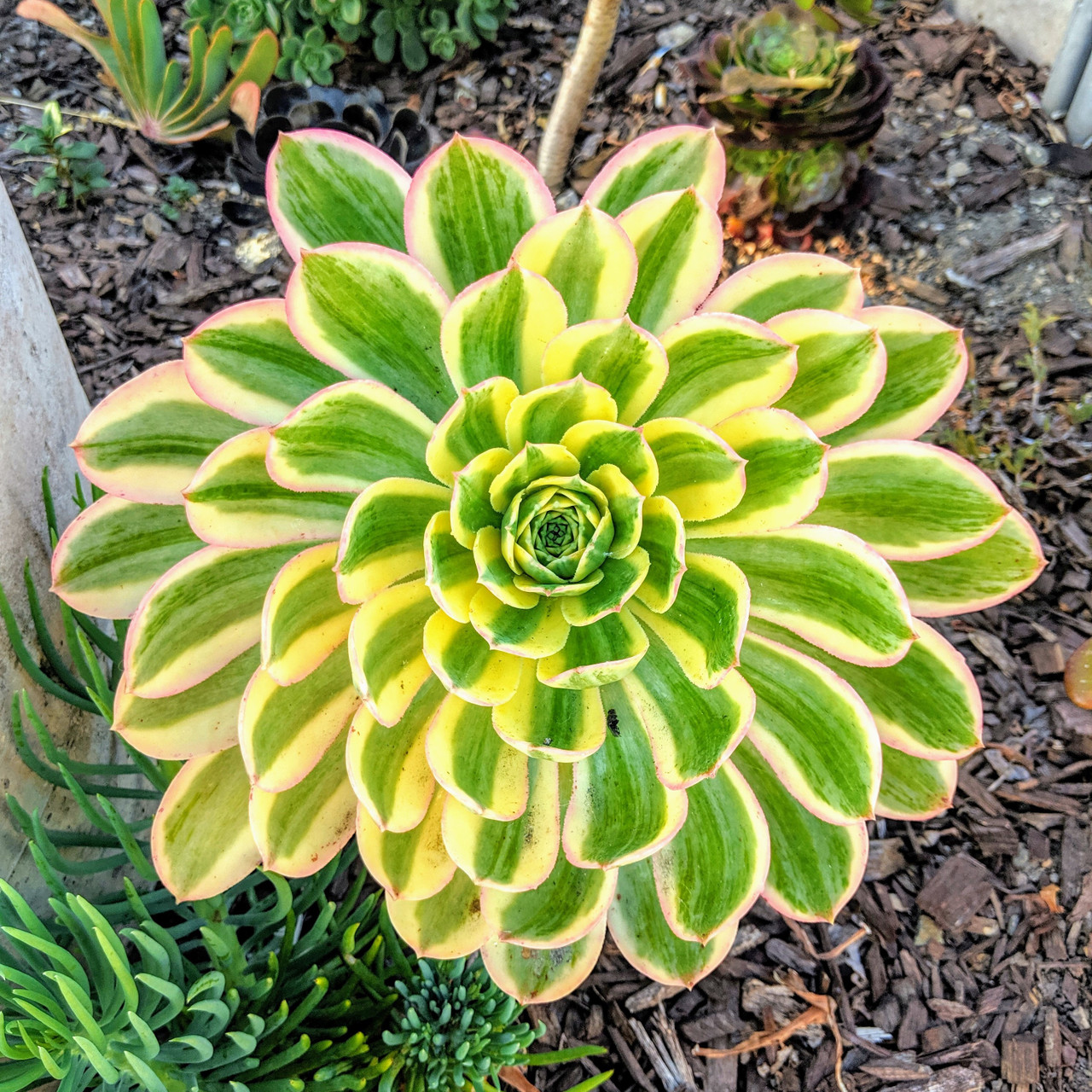Sunburst is a striking succulent that has white and green leaves. Its edges are pink but can turn a vibrant red when exposed to ample amounts of sunlight. During the summer months, white flowers can be expected to bloom. Unfortunately, this particular variety of succulent is monocarpic, meaning that after it flowers, the main plant will no longer exist.
Table of Contents
Care and Propagation Information
Although ‘Sunburst’ Aeonium prefers full sun, it can still be grown indoors if it is provided with enough light. It is important to remember that all Aeoniums are prone to bruising and this will not harm the plant. The succulent will continue to grow new leaves normally.
Watering
Aeonium ‘Sunburst’ should be watered using the “soak and dry” method, where it is watered thoroughly until the soil is saturated and allowed to dry completely between waterings. This is the standard method for succulent care.
Where to Plant
If you live in an area with temperatures below 30° F (-1.1° C), it’s best to grow Aeonium ‘Sunburst’ in a pot that can be taken indoors when the weather gets cold. This succulent thrives in full to partial sun and can also be grown indoors.
How to Propagate Aeonium ‘Sunburst’
Aeonium ‘Sunburst’ can easily be propagated by taking stem cuttings. This type of succulent is monocarpic, meaning the main plant will die after it flowers. Nevertheless, it can take several years for the plant to bloom.
Cuttings
To propagate an Aeonium ‘Sunburst,’ utilize a clean, sharp knife or a pair of scissors. Cut off a piece of the stem away from the main cluster, and leave the cut exposed for a few days to allow the wound to form a protective layer. Afterwards, put it in soil that drains well.
Care and Propagation Information
General Care for Aeonium ‘Sunburst’
Watering
Aeonium ‘Sunburst’ should be watered using the “soak and dry” method, where it is watered thoroughly until the soil is saturated and allowed to dry completely between waterings. This is the standard method for succulent care.
Where to Plant
If you live in an area with temperatures below 30° F (-1.1° C), it’s best to grow Aeonium ‘Sunburst’ in a pot that can be taken indoors when the weather gets cold. This succulent thrives in full to partial sun and can also be grown indoors.
How to Propagate Aeonium ‘Sunburst’
Aeonium ‘Sunburst’ can easily be propagated by taking stem cuttings. This type of succulent is monocarpic, meaning the main plant will die after it flowers. Nevertheless, it can take several years for the plant to bloom.
Cuttings
To propagate an Aeonium ‘Sunburst,’ utilize a clean, sharp knife or a pair of scissors. Cut off a piece of the stem away from the main cluster, and leave the cut exposed for a few days to allow the wound to form a protective layer. Afterwards, put it in soil that drains well.
FAQ
How tall does sunburst Aeonium grow?
Mature height of 18-24 inches (45-60 cm) and width of 24 inches (60 cm). This plant thrives in sandy, dry to moderately moist soils in full sunlight.
Why is my aeonium leggy?
Your echeverias and aeoniums are not thriving due to inadequate lighting. These plants require a warm environment with plenty of direct sunshine to remain healthy; if they are not receiving enough light, they will search for more by stretching out. It is possible that you are cutting them back too severely, and disposing of the upper half of the plant which should be kept.
Do Aeoniums like full sun?
Which Aeonium grows the tallest?
Aeonium undulatum is a majestic succulent, the largest of the Aeonium species. It is native to Gran Canaria, one of the Canary Islands, and has an impressive main stem that can reach up to 2 meters in height and 1 meter in width. Offsets grow from the base of the plant.
How do I stop Aeonium from getting leggy?
Cut off the tops of your leggy aeoniums, leaving an inch or two of stem, and discard the rest of the plant, including its roots. Replant each rosette as a cutting by burying it in the soil with just the top exposed.



